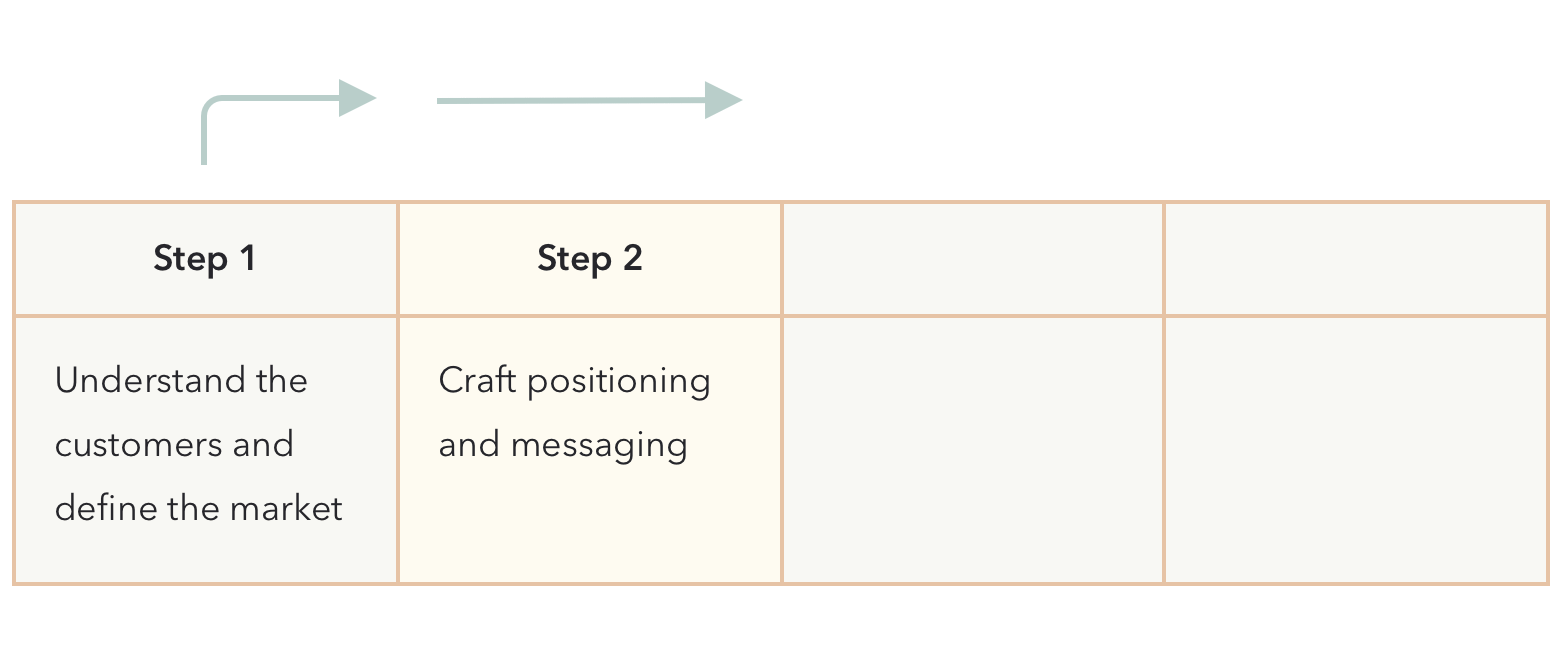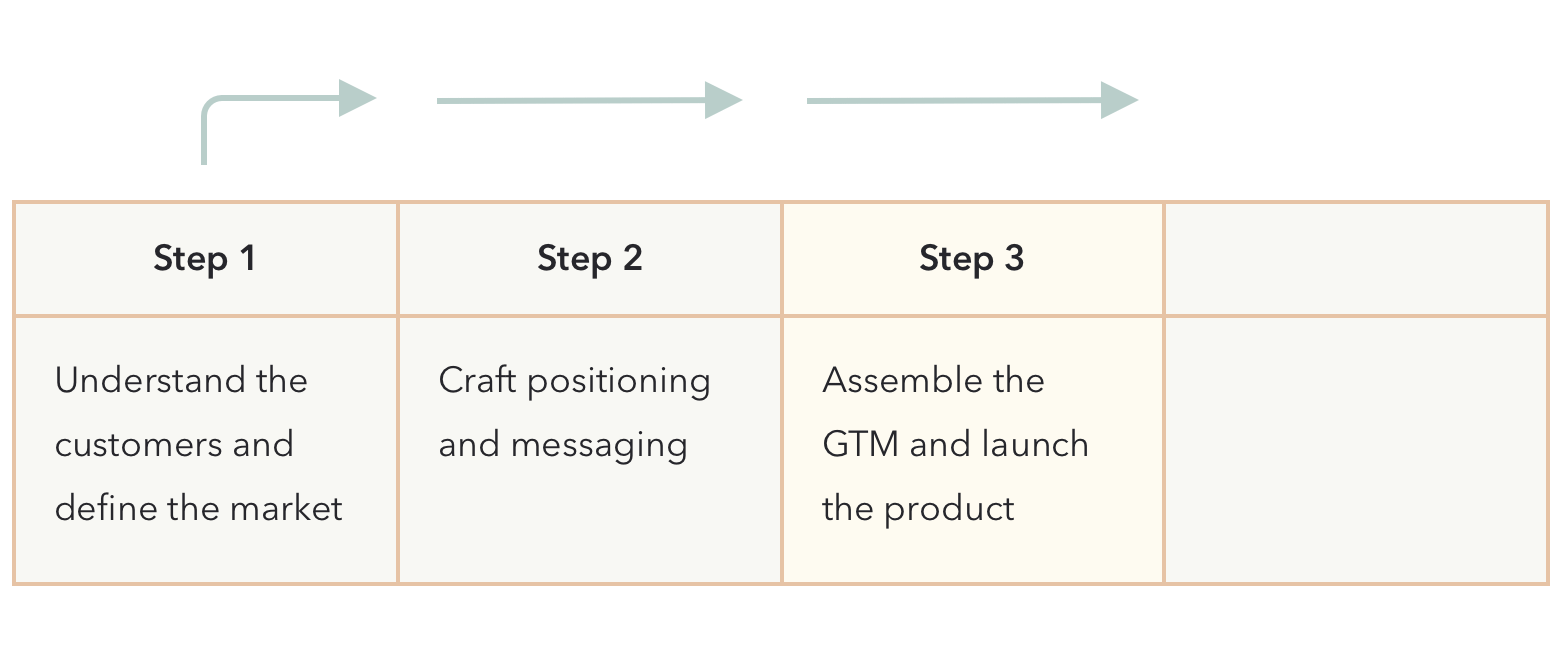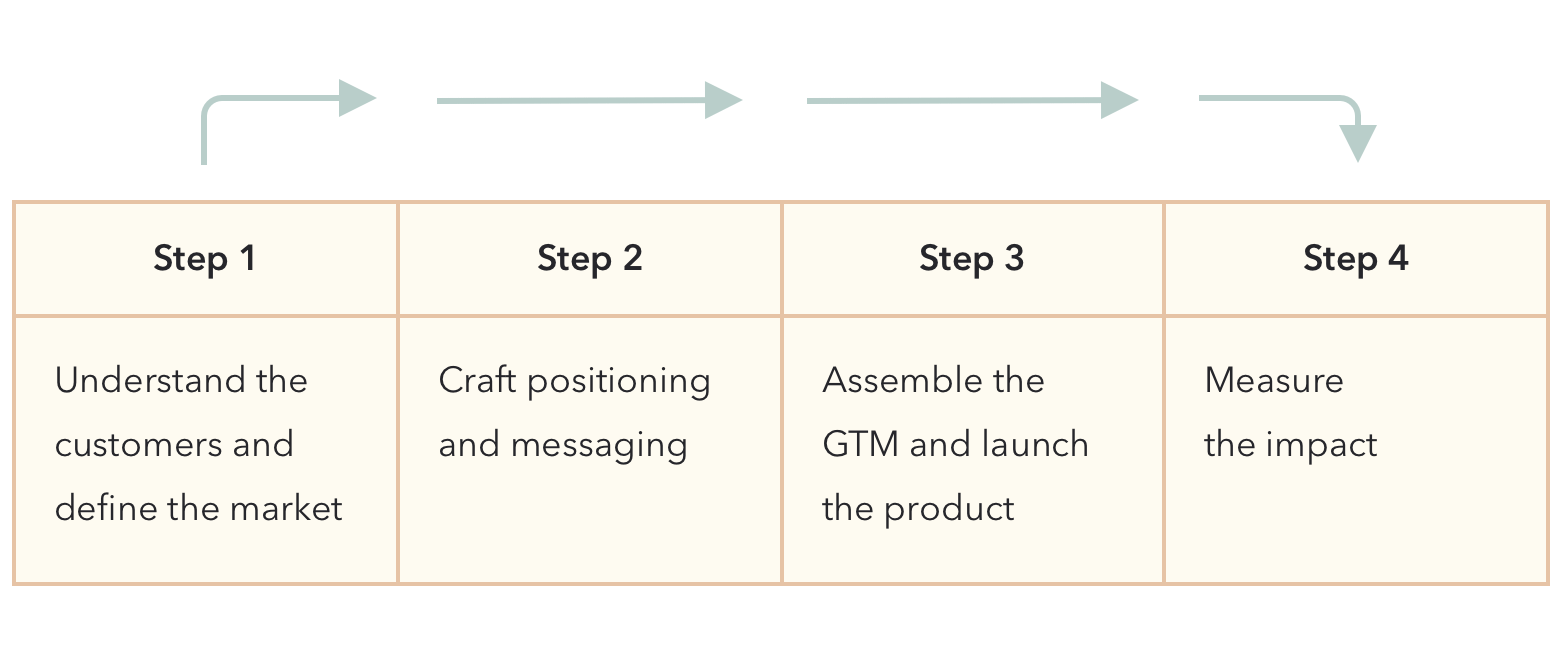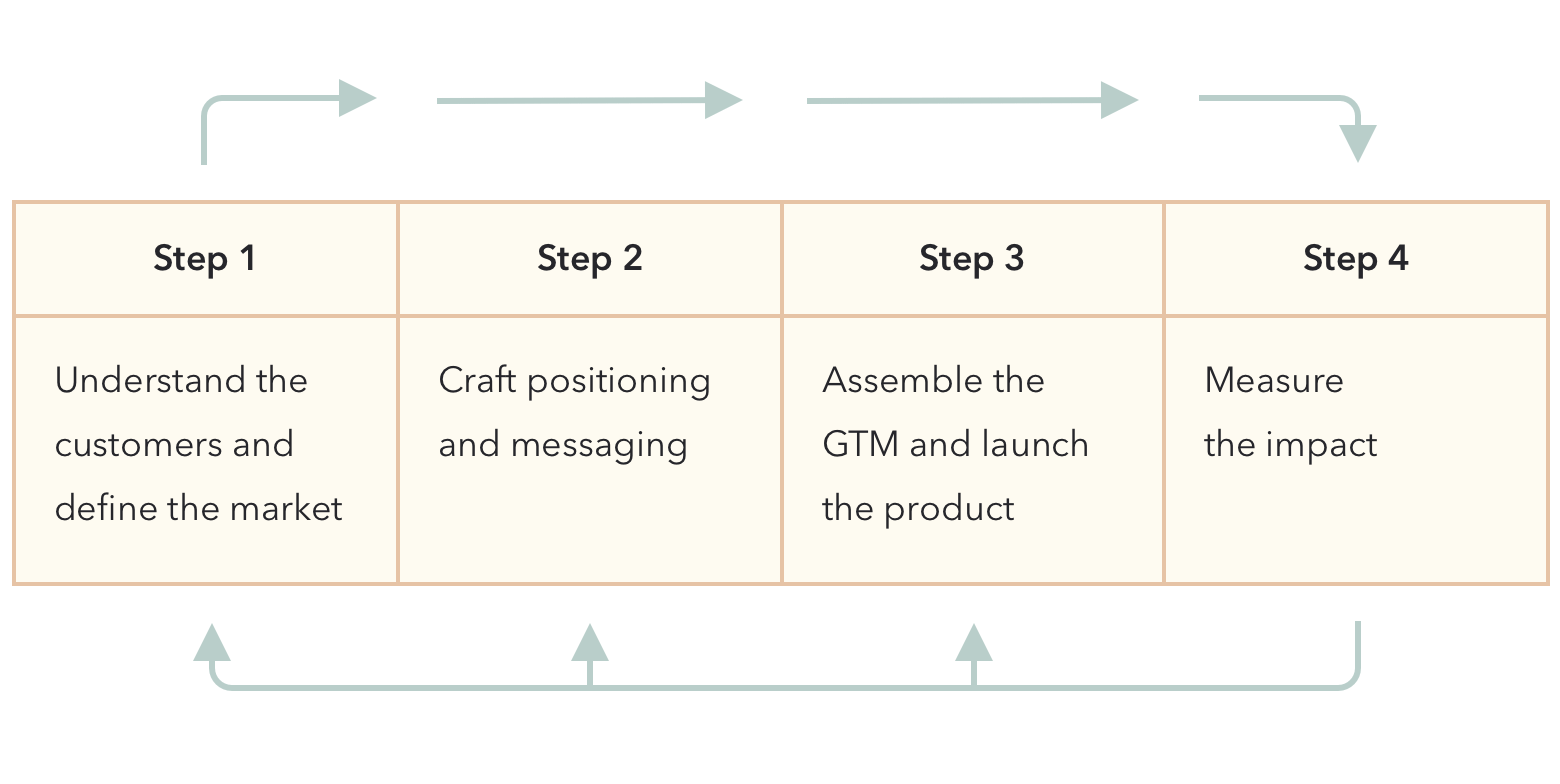What is Product Marketing, and what do PMMs do?
Before you dive into this article:
Can you think about something for a moment? Here is what I’d like you to do: “Close your eyes and think about product marketing, and what you understand about it.”
I believe that should help you put this article in context, and why it’s useful, especially if you work in marketing.
Your eyes closed for 1 min. You are giving product marketing some thought.

Now, note down your definition of product marketing, especially if you've given some thought to your favorite products or ones you are working on, and see how it compares to what’s outlined in this article.
Back to reading.
Although product marketing is a known professional description, often found in the names of departments across multiple organizations in different industries and verticals, as well as in the job titles of the members of those departments, it is not a rare case when people struggle to understand its meaning. One reason for this is, product marketing is the job function that sits at the intersection of product management, sales, client success, user experience, and marketing. And, as a result, product marketing function varies significantly from company to company and it sometimes even means different things at the same organization.
So, what is product marketing?
Product marketing is the process of bringing a product to market and driving product growth.
A product marketing manager's main goal is to make it happen. To bring products to market in the most efficient way possible, PMMs are focused on things like customer development, competitive analysis, pricing, positioning and messaging, and effective launch plans. What is really important, product marketing is not over once the product has been brought to the market, it does last. After the launch, PMMs are focused on ensuring the right audience is aware of the product, customers understand how the product works and have enough reasons to return to the product over time, and feedback of those customers and their behaviour are analyzed and acted on throughout the product development lifecycle.
What does a Product Marketing Manager (PMM) do?
The ultimate goal of any company is to build the product a lot of customers want, which translates into finding, holding, and scaling the product-market fit. PMMs are prominent "players" in this "game", and their responsibilities are tailored to each and every stage of the company's path from an idea to the released product and its success.
Key responsibilities that pretty much every PMM has, are the following:
- Understand the customers and define the market
- Craft product positioning and messaging
- Assemble the go-to-market plan and launch the product
- Measure impact, iterate, and improve the strategy
One way to understand product marketing managers' responsibilities and day-to-day work, is to imagine a repeatable process with the ordered steps they follow to go from insights to decisions and actions.
A path from insights to decisions and actions

A less logical and more artistic way to understand these steps is to think of a product as a story, and the PMM a storyteller, an author crafting what he or she wants readers to experience and engage with. PMM should create and tell a story about the problem that the product solves, the user who is facing this problem, how the product solves the problem, and what the product does that competitors don't do.
Success in this game, for all the PMM's storytelling efforts, is after hearing this story users realize they have a problem that needs solving, and this product solves that specific problem. Users then understand the value of the product and start using it. As part of that, when users recommend it to others, the product generates its own viable and self-sustaining network effect that increases growth beyond direct marketing (user acquisition) efforts.
Next, we look at the following four steps, outlining what PMMs do, from insights to actions and measuring outcomes.
Step 1: Understand the customers and define the market
A path from insights to decisions and actions

Just like building a house starts with a foundation, marketing a product starts with understanding the market and target customers. Usually, product marketers collaborate with various cross-functional teams, or third-party providers, to conduct market and user research. But at the end of the day, it is PMM's responsibility to put together all the research results and turn them into prioritized actionable insights in order to:
- Define the target market
- Understand potential customers and their needs
- Define the problem that the product will solve for the target customer and how the product will solve it
- Decide whether there is a big enough opportunity to chase: a) measure the market and validate whether it is big enough; b) verify whether the problem is painful enough
- Identify how the product should be differentiated from the competition
- Make sure the product won't lose its relevancy as the market evolves
All the learnings and insights distilled during the research process, serve as the foundation of what the product story should be about and for whom it should be created and told.
Step 2: Craft product positioning and messaging
A path from insights to decisions and actions

Once there’s sufficient understanding of the market and target customers, PMMs craft the positioning statement leveraging everything they pulled together from the research.
It may seem that the positioning statement is built formulaically and all a PMM has to do is to simply plug in the outcomes of the research into the positioning template, which technically is the right thing to do (e.g. Product X does Y for Audience Z, with A, B and C benefits).
But if it was so, all the product stories would be the same. (b-o-o-o-o-r-i-n-g).
In reality, it is about being able to discover, validate, polish and finalize the right variables for this formula in order to define and explain why customers choose and use the product.
Having crafted the positioning statement, PMMs use it internally to communicate the unique value that the product delivers to the target customers and to explain how the product stands out from the competition. This way, with a company aligned around a positioning statement, product development can move forward more coherently and logically.
As a product develops, positioning statements should be used as the framework that guides the messaging for external communication across multiple channels. And, it is PMM's responsibility to guarantee that the right customers always receive the messaging that resonates with their needs most. Same as positioning, messaging must come from data-driven confidence in its relevance. PMMs usually need to experiment with different messaging, positioning, and channels, to identify the most effective to concentrate on.
After making it through the first two steps, PMMs have to synthesize all the input data from customer and user research, map it with the company's business goals and its growth stage, and then develop a strategy around the product that will drive it forward.
Step 3: Design and execute the GTM
A path from insights to decisions and actions

One of the main PMM's responsibilities is to design a go-to-market (GTM) plan, a plan on how, when, and where to tell the product story. Many people confuse GTM and advertising or think of it as a launch plan. Whereas, in reality, GTM starts way before the product launch and goes far beyond it - throughout the product lifecycle.
So, what is GTM then? To answer this question let's review the definition of product marketing once again.
Product marketing is the process of bringing a product to market and driving product growth.
To succeed in this process, a company needs a carefully thought-out plan. Which is the GTM plan. So, the definition of the GTM is the following:
GTM is a comprehensive action plan detailing how a company brings a product to market and drives product growth.
To create the GTM, a Product Marketing Manager has to do the following:
- Define who the product is for, what problem the product solves, and how the product is different
- Design the product launch plan along with the launch stages and a reasonable and realistic timeline
- Orchestrate the acquisition & engagement channels
- Strategize the pricing & unit economy
- Choose the sales model
- Understand and visualize the customer journey
- Develop the growth plan
- Know how the success will be measured
- Put it all together into a clear, and shareable go-to-market plan
It is important to understand that because today's world is very dynamic and very noisy, the GTM is not a set-and-forget plan. It should be built to execute and iterate, again and again. PMM must test and optimize the GTM, throughout the product development lifecycle to ensure the product stands out as the market evolves.
So, the main PMM's responsibility with the GTM is not to simply launch a product. It is to communicate the value of the product before, during, and after the product launch.
Step 4: Measure the impact
A path from insights to decisions and actions

Once the product has gone to market, PMMs are to deliver a reliable assessment of product marketing impact. Having product marketing impact measured means having these product questions answered:
- Is the audience we target/attract the right audience?
- Is the market we chase the right market to chase?
- Does the product differ from the competition?
- Is the product positioned right?
- Does the messaging resonate with the users and their needs?
- Does the value proposition get traction?
- Are the channels we choose the right channels for the segments we target?
Answers to these questions are not just Yes or No. Actually, at the end of the day, they are either Yes or No, but they should not be intuition-driven Yeses or Noes. PMM has to define the set of metrics that would collectively or separately serve as indicators as to the strength of the Yes or No for each of the questions. Data can demonstrate whether a new strategy is needed, whether the GTM, channels or the messaging and value proposition needs to change.
If No dominates, it means the product is not likely to fit the market. And PMM has to find out what causes No, and how to convert it into a Yes.
When PMM has a confident Yes as an answer to all of these questions, it means that the product is likely to fit the market, and it is the right time for PMM to scale product growth.
Measure impact is a constant work in progress, combining quantitative and qualitative data. The main challenge here is that PMMs have to focus on analyzing multiple interdependent and complimentary things at once to hypothesize new and more innovative paths from insights to decisions and actions to achieve the Yeses and scale the product growth to new levels while holding the Yesses for all or majority of the product questions.
Although measuring impact is highlighted as the last step in the PMM's path, this is not crossing the finish line after a long run. A better analogy is this is a checkpoint and one that a PMM reaches on a regular basis, to measure the progress against the goals. Depending on what the data shows determines what changes to the strategy need to be made, and how quickly or not a PMM needs to adjust direction, or even ensure changes to the product are made.
Being a PMM is not a linear journey; it is a loop
As you can see, PMMs have a heavy stack of responsibilities. They have to travel the journey from insights to decisions and actions. This path can be explained like this: Discover → Strategize → Launch → Measure → Repeat.
The good PMM is a pathfinder, trailblazer, groundbreaker, pioneer - whatever you call it - the one who is responsible for a successful journey on this path. A successful journey means that the outcomes of the journey help the company to succeed on its ultimate goal: to build the product a lot of customers want, which translates into finding, holding, and scaling the product-market fit.
It doesn't matter whether PMMs have to reframe the entire product story or scale the product to new horizons, the journey starts over and over again. And neither competitors nor market changes (both of which can cause adjustments to the journey) should keep PMMs from making every next journey better.
It is not a linear journey; it is a loop

PMM has to innovate a lot. Although the journey looks framework-ish, every next one should be different and unique.
PMM has to support the speed of the journey. Acting on insights fast, finding the next opportunity faster than competitors, and redesigning the next route based on the measurement results quickly are critical to understanding where the product fits with the market and how to scale its growth.
Company's Growth Stage and PMM's Professional Maturity Level
Depending on PMM's experience and professional maturity level, they are either going to be leading teams on the journey from insights to actions or will be supervised along the way.
The company's growth stage influences the range of PMM's responsibilities a lot. In a startup, PMM (most likely one PMM in the entire organization) is responsible for everything, and very likely implementing the marketing plans too. As the company grows, responsibilities become more specific, more PMMs join the team to take care of each step of the path separately and build the hierarchical structure of the product marketing teams.






